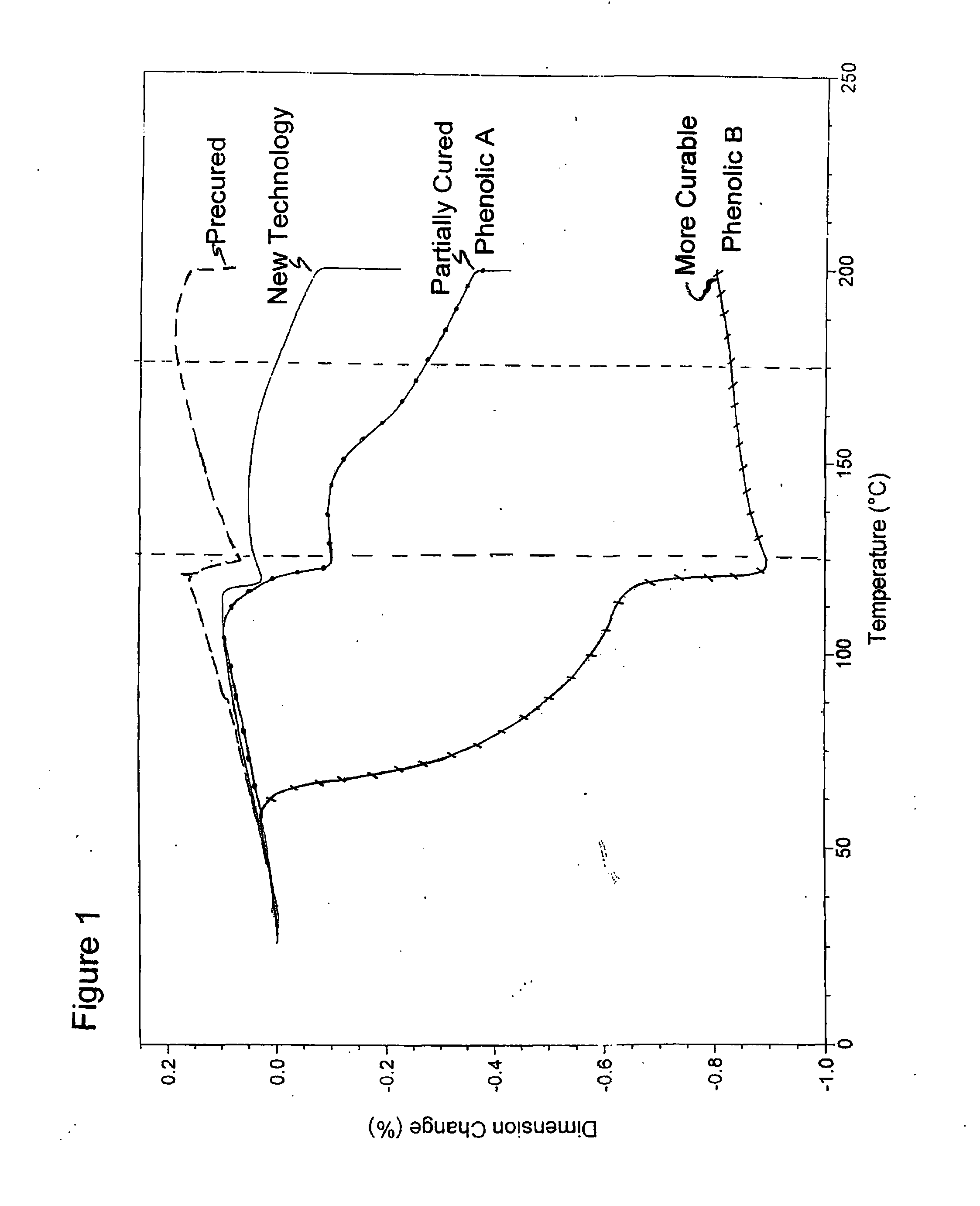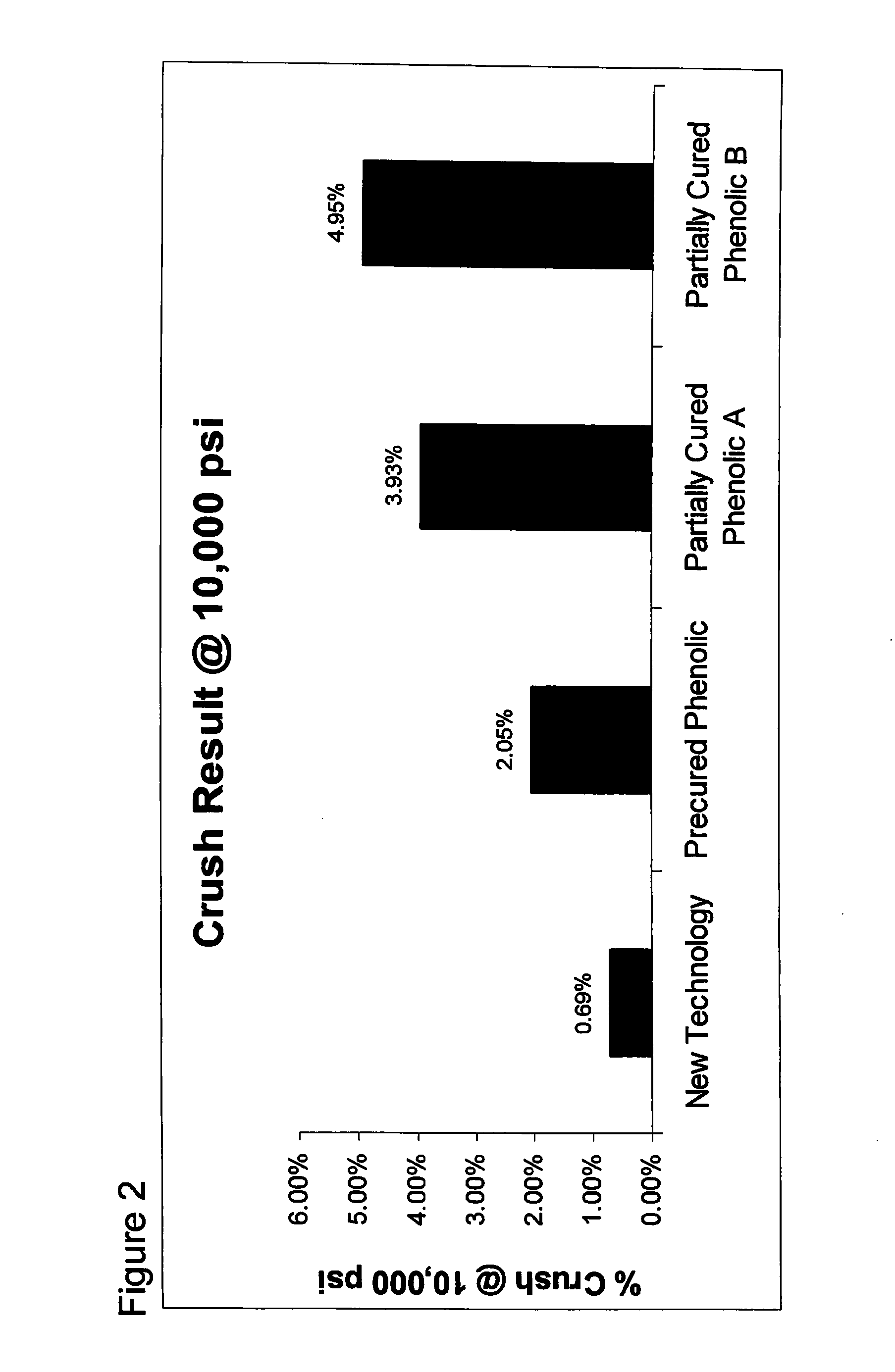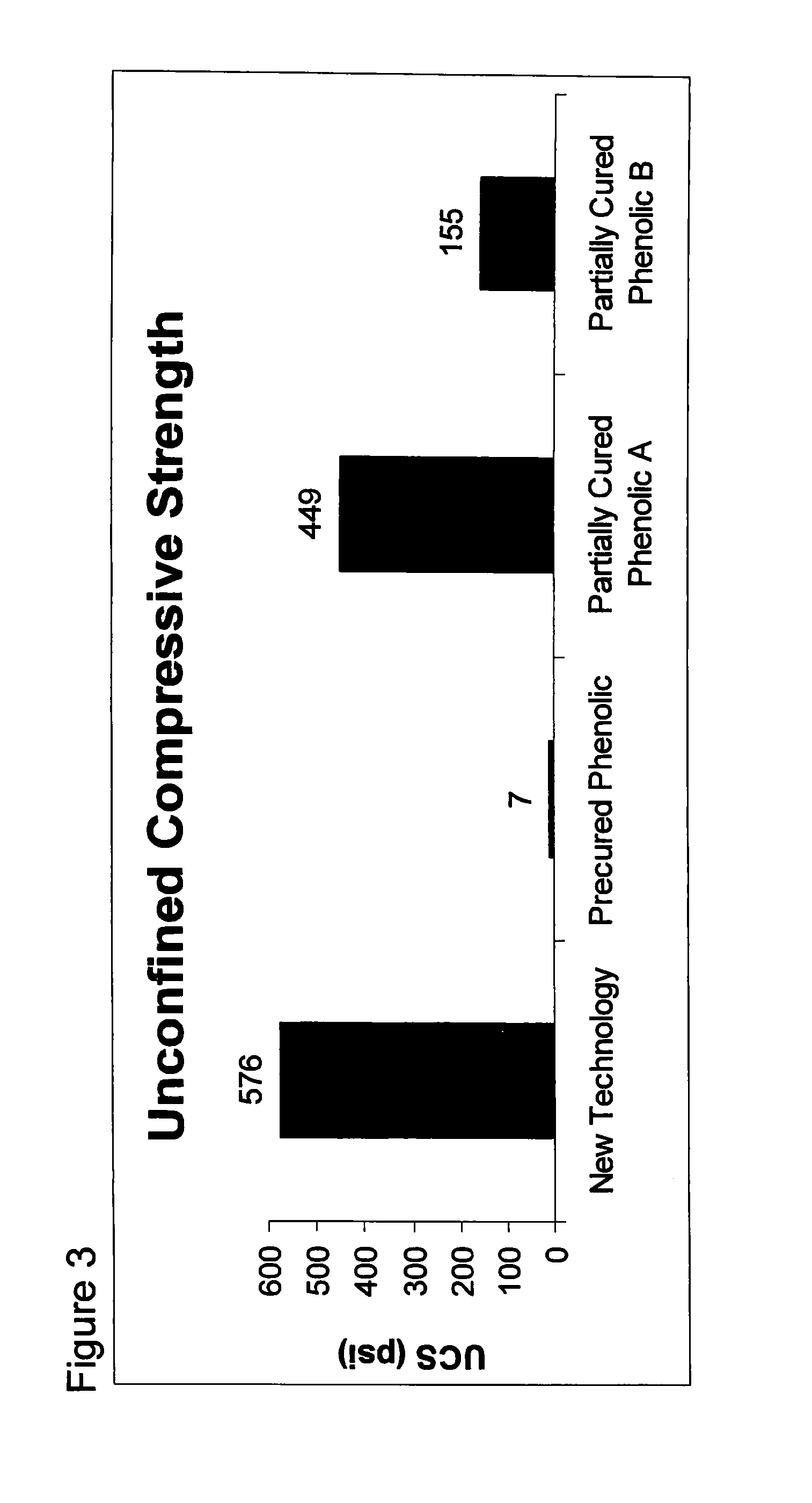Coated and cured proppants
a technology of proppants and coatings, applied in the direction of coatings, pretreatment surfaces, borehole/well accessories, etc., to achieve the effects of low dust or fines generation, good crush resistance and fracture conductivity, and high production ra
- Summary
- Abstract
- Description
- Claims
- Application Information
AI Technical Summary
Benefits of technology
Problems solved by technology
Method used
Image
Examples
example 1
[0167]Ten pounds of Minnesota 40 / 70 fracturing sand is heated to 200° F. in a laboratory mixer at which point the following components are added in the sequence and timing as given below in Tables 1 and 2. The weight ratio of the poly-MDI to phenolic polyol in this example is 75 / 25.
TABLE 1WEIGHT (grams)COMPONENT4540Minnesota sand4.5silane coupling agent2.350% red iron oxide in castor oil6.91,3,5-tris(3-(dimethylamino)propyl)-hexahydro-s-triazine (JEFFCAT TR90)34.2Phenolic Polyol comprising 48% phenolic resin, 28%cashew nut oil, 24% castor oil102.2Poly-MDI (32% NCO content)2.5Wetting agent
TABLE 2TIME(minutes:seconds)ADDITION / COMMENT0:00Sand is at 200° F.0:004.5 gms silane coupling agent is added over 30 secs0:00JEFFCAT TR90 is added over 20 secs0:00Blend of red iron oxide and Phenolic Polyol isadded over 60 seconds0:10Poly-MDI is added over 60 seconds2:00Product is free flowing3:30Wetting agent is added over 5 seconds4:00Product is discharged at 180° F.
[0168]In this and the other exa...
example 2
[0170]Ten pounds of Genoa 40 / 70 fracturing sand is heated to 204° F. in a laboratory mixer at which point the following components are added in the sequence and timing as given below in Tables 3 and 4. The weight ratio of the poly MDI to phenolic polyol in this example is 75 / 25.
TABLE 3WEIGHT(grams)COMPONENT4540Genoa sand4.5A1100 silane coupling agent2.350% red iron oxide in castor oil6.9JEFFCAT TR9018.2Phenolic Polyol comprised of 48% phenolic resin, 28%cashew nut oil, 24% castor oil54.5Poly-MDI (32% NCO content)2.3Wetting agent
TABLE 4TIME(minutes:seconds)ADDITION / COMMENT0:00Sand is at 204° F.0:004.5 gms A1100 is added over 10 secs0:00JEFFCAT TR90 is added over 10 secs0:00blend of red iron oxide and Phenolic Polyol isadded over 30 seconds0:10polyMDI is added over 30 seconds2:00Product is free-flowing3:30Wetting agent is added over 5 seconds4:00Product is discharged at 182° F.
[0171]The resin coated sand from the example above tested as having 1.48% coating from the mixer. When subjec...
example 3
[0172]Ten pounds of Minnesota fracturing sand is heated to 200° F. in a laboratory mixer at which point the following components are added in the sequence and timing as given below in Tables 5 and 6. The weight ratio of the poly MDI to phenolic polyol in this example is 92 / 8.
TABLE 5WEIGHT(grams)COMPONENTS:4540Minnesota sand4.5A1100 silane coupling agent2.350% red iron oxide in castor oil6.9JEFFCAT TR 9012Phenolic Polyol comprised of 48% phenolic resin, 28%cashew nut oil, 24% castor oil135Poly-MDI (32% NCO content)2.5Wetting agent
TABLE 6TIME(minutes:seconds)ADDITION / COMMENT0:00Sand is at 202° F.0:00A1100 is added over 20 secs0:00JEFFCAT TR90 is added over 20 secs0:00Blend of red iron oxide and Phenolic Polyol isadded over 60 seconds0:10Poly-MDI is added over 60 seconds2:00Product is free flowing3:30Wetting agent is added over 5 seconds4:00Product is discharged at 170° F.
[0173]The resin coated sand from example 3 tested at 2.80% coating level from the mixer. When subjected to a three ...
PUM
| Property | Measurement | Unit |
|---|---|---|
| particle size | aaaaa | aaaaa |
| temperature | aaaaa | aaaaa |
| temperature | aaaaa | aaaaa |
Abstract
Description
Claims
Application Information
 Login to View More
Login to View More - R&D
- Intellectual Property
- Life Sciences
- Materials
- Tech Scout
- Unparalleled Data Quality
- Higher Quality Content
- 60% Fewer Hallucinations
Browse by: Latest US Patents, China's latest patents, Technical Efficacy Thesaurus, Application Domain, Technology Topic, Popular Technical Reports.
© 2025 PatSnap. All rights reserved.Legal|Privacy policy|Modern Slavery Act Transparency Statement|Sitemap|About US| Contact US: help@patsnap.com



